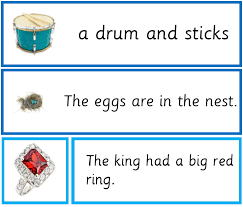Syntax

Syntax is the branch of linguistics that studies sentence structure. The traditional grammar, which has its roots in the description of the classical languages – Greek and Latin – provided the distinction and description of the parts of speech: nouns (window, idea, Mary, milk), verbs (give, play, believe, have, be), adjectives (nice, new, open), adverbs (very, quickly, really), prepositions (on, of, without, despite) pronouns (she, you, somebody), articles (a, the) conjunctions (and, when, though), and interjections (oh, phew).
Using the rules of syntax, we combine words into phrases and phrases into sentences. English has fixed Subject-Verb-Object (SVO) word order. Therefore, the sentence The children took all the apples. is correct (grammatical) but the sentence *Took all the apples the children. is ungrammatical.
A phrase may consist of one word or a group of words.

The main types of phrases are: the noun phrase, the verb phrase, the adjective phrase, the adverb phrase, and the prepositional phrase. Each type of phrase has the head – the lexical category around which the phrase is built. A phrase can contain only the head. Some examples of noun phrases: a book, the book, people, these people, the red carpet. Prepositional phrases consist of a preposition and a noun phrase: on the table, with a spoon, in the crowded street, etc. 
Sentences are classified into different types. The majority of linguists make a distinction between functional and formal classifications. From the point of view of their function, sentences are divided into statements (She closed the window.), questions (Did she close the window?), commands (Close the window!), and exclamations (What a big window!). The formal classification makes a distinction between declarative, interrogative, imperative, and exclamative sentences. One more categorization of sentences is into simple, complex and compound.
Simple sentences have one Subject – Verb unit
A compound sentence consists of two or more main clauses,
We have a complex sentence when one clause is used as a main clause and another is added to express subordinate meaning, developing some as24 pect of the main clause
Exercise 1
Mark the grammatical sentences in each set. Determine why the other sentences are not grammatical.
1) The girl put.
The girl put on the table.
The girl put carefully.
The girl put the apples on the table
. 2) John slept the bed.
John slept.
John slept on the bed.
3) The children took.
The children took three.
The children took three books.
Three books took the children.
